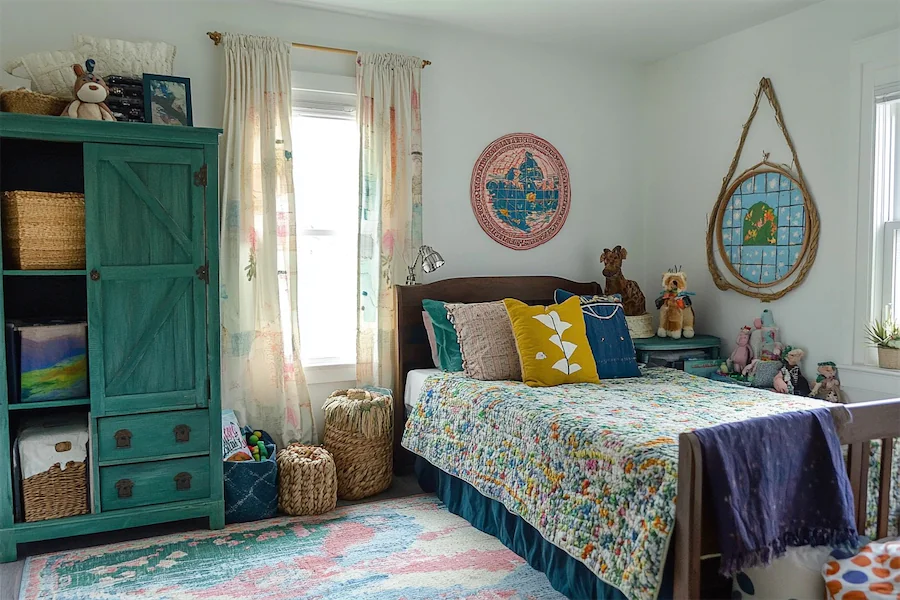Designing a farmhouse-inspired kids’ room combines rustic charm with modern comfort, creating a cozy and functional space for your child. Here’s a comprehensive guide to achieving this aesthetic:
Introduction to Farmhouse Kids’ Rooms
Farmhouse style emphasizes simplicity, natural materials, and a warm, inviting atmosphere. In a child’s room, this translates to a space that is both practical and nurturing, fostering creativity and comfort.
History and Origins of Farmhouse Style
Originating from rural homes, farmhouse design focuses on functionality and durability. Historically, it incorporated locally sourced materials and handcrafted furnishings, reflecting a straightforward and hardworking lifestyle. Today, this style has evolved to blend traditional elements with modern touches, maintaining its rustic roots while adapting to contemporary living.
Key Features of Farmhouse Kids’ Rooms
- Natural Materials: Utilize wood, stone, and metals to bring the outdoors inside. Elements like wooden beams or reclaimed wood furniture can instantly elevate a room’s vibe.
- Neutral Color Palette: Soft, muted tones such as whites, creams, and light grays set a calming backdrop. Accents of pastel colors can add warmth and personality without overwhelming the space.
- Vintage Furniture: Incorporate pieces like weathered dressers or antique bed frames to add character and a sense of history. These items not only enhance the aesthetic but also tell a story, making the room unique.
- Textured Textiles: Layering soft textiles like flannel, cotton, and linen adds comfort and coziness. Think patterned quilts, fluffy rugs, and cushy throw pillows to invite relaxation.
- Functional Decor: Incorporate items that are both decorative and practical, such as woven baskets for storage or chalkboard walls for creativity. This approach keeps the room organized while encouraging play and learning.
Applications of Farmhouse Kids’ Rooms
- Personalized Spaces: Tailor the room to reflect your child’s interests by incorporating themed decor that complements the farmhouse style, such as nautical elements or floral patterns.
- Shared Bedrooms: Farmhouse design adapts well to shared spaces, using neutral bases with personalized bedding or decor for each child to create harmony and individuality.
- Play Areas: Designate a section of the room for play, using durable materials and functional storage solutions to keep toys organized and accessible.
Considerations When Choosing Farmhouse Decor
- Safety: Ensure all furniture and decor items are child-friendly, with no sharp edges or hazardous materials.
- Durability: Select high-quality materials that can withstand wear and tear, ensuring the room remains beautiful and functional as your child grows.
- Adaptability: Choose timeless pieces that can easily transition as your child’s tastes and needs evolve over time.
Conclusion
Creating a farmhouse-inspired kids’ room blends rustic charm with modern functionality, resulting in a space that is both inviting and practical. By focusing on natural materials, a neutral color palette, and incorporating vintage elements, you can design a room that fosters comfort and creativity for your child.
